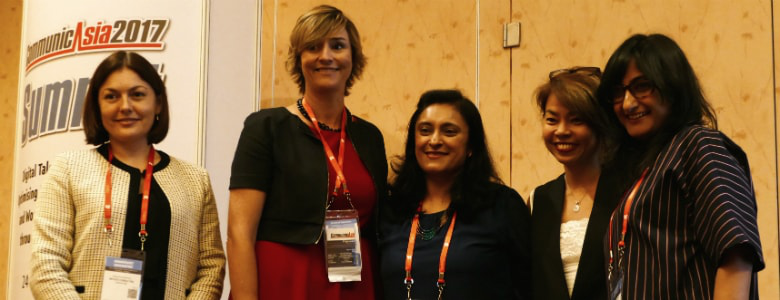The Learning Workplace

Contrary to what some students might think, learning doesn’t stop the moment you throw your cap in the air at your college graduation ceremony. Out in the real world, employees who want to stay relevant must keep abreast of new developments in their fields, and sometimes even branch out to learn new skills.
Luckily, thanks to online platforms such as Coursera, Udemy and even YouTube, learning has never been more accessible.
At the same time, as education and educational content increasingly move into the digital realm, large amounts of data are being generated on how people learn.
To improve learning in the workplace, this data should be used to develop customised, industry-relevant training programmes for employees, said a panel of experts, speaking on 24 May at CommunicAsia 2017.
For example, analytics could be used to detect areas where coders may need improvement, said the Government Technology Agency of Singapore’s (GovTech) Chief People Officer Ms Evangeline Chua, one of the panellists. “With analytics, we can be more predictive and targeted when it comes to training and development for our workforce,” she said.
The panel, entitled “From R&D to L&D: How Learning and Development is Key to the Success of Rebooting and Upskilling the Workforce”, was moderated by Ms Philippa Penfold, Senior HR Manager at Infosys Consulting.
The work-learning continuum
While the field of learning analytics has extensively examined traditional classroom learning, it also needs to carry out more studies of workplace learning, said panellist Ms Melissa Johnston, Managing Director at HR consultancy TalentED!.
“The workplace is where most effective learning takes place, and it happens every day,” she said.
“If we can quantify this, we can replicate it and make sure that we are doing it right.”
Agreeing, fellow panellist Ms Sonia Kulkarni, regional head (HR Asia Pacific and Middle East) at IT consultancy Capgemini, said that training should not be seen as separate from work.
“What ideally should exist is a blurring of the lines between work and learning. They have to be on the same continuum, with work aspects built into the learning,” she said. “I believe this will make learning more cohesive.”
In addition to content, the way in which training is delivered is also critical, said GovTech’s Ms Chua. Learning analytics, she added, can be used to determine what is most appropriate for the target audience.
“The modality matters, because learning depends on each individual’s style. Some may prefer classroom learning, while others may prefer social or peer learning,” she said.
“Picking the right tool is important. There are so many platforms out there today, so we are really lucky and spoiled for choice.”
A masterplan for tech skills
In May 2016, the Singapore government launched the TechSkills Accelerator (TeSA), a masterplan for helping individuals and businesses develop critical ICT skills.
Panellist Ms Soumee De, Senior Vice President (regional HR Asia Pacific and Middle East) at Citibank, said that her organisation was using TeSA’s programmes to help its mid-career employees get up to speed on newer areas such as fintech and cloud-based technologies.
“We have internal talent, but they were skilled in legacy technologies,” she explained. “We really needed to do something within six to nine months to transform that.”
Elaborating on the initiative, Ms Chua said that TeSA aims to fulfil three roles.
First, it functions as a masterplan, identifying key future skills and job opportunities, and supplying training where it is needed. Second, it plays a coordinating role, bringing together service providers, vendors and institutes of higher learning to cater to the training needs of different industry sectors. Finally, it has the muscle to set industry standards and provide accreditation for programmes.
Ms Chua urged the audience to look into what TeSA has to offer, adding that it would provide a helpful framework for organisations looking to strengthen their ICT capabilities.
Learning and Sharing
GovTech has a special reason to be concerned about the future of work, said Ms Chua. “Our mandate is to make Singapore a Smart Nation; hence it is absolutely critical that we as an organisation embody future skills,” she said.
One of the organisation’s initiatives involves inviting industry players to come and share best practices, future technologies and design processes. This has been an eye-opener for GovTech’s staff, said Ms Chua, and provides an experience that goes beyond that of a traditional classroom.
“I try to discourage people from just sending employees to the classroom because you can’t measure the learning that takes place there, and it’s also difficult to see how what was learnt in the classroom applies to work,” added Ms Chua.
GovTech also believes that it will benefit from embracing the network or sharing economy, said Ms Chua.
“As an organisation, we should not be inward-looking,” she added. “By collaborating with others, we build a whole ecosystem that allows us to plug and play. Employees can tap into this ecosystem, instead of us trying to build it from scratch.”
https://www.tech.gov.sg/media/technews/the-learning-workplace
